Soldiers conduct a security scan during a simulated downed aircraft exercise at Joint Base Langley-Eustis, Va., March 10, 2021.
Providing up-to-date information, news and original content on American Military issues.
Soldiers conduct a security scan during a simulated downed aircraft exercise at Joint Base Langley-Eustis, Va., March 10, 2021.
Navy Petty Officer 2nd Class Estrella Martinez provides security with an M240 machine gun aboard a landing craft while training in the Atlantic Ocean, March 15, 2021.
Soldiers work on a strategy to fire illumination rounds during an artillery qualification exercise at the Dona Ana Range Complex, N.M., March 8, 2021.
Sailors heave in line aboard the USS Mitscher as the ship prepares to depart Souda Bay, Greece, March 24, 2021.
Airmen load a truck onto a C-5M Super Galaxy during loadmaster training at Dover Air Force Base, Del., March 9, 2021.
Air Force Senior Airman Olivia J. Matthews, a lab technician, performs a pipette calibration on Kirtland Air Force Base, N.M., March 16, 2021. Mathews, who's assigned to the 377th Medical Group, is involved in COVID-19 response and ensuring COVID tests are properly and safely interpreted.
Army Pfc. Taegan Goldsby administers the COVID-19 vaccine to a patient at Fort Sam Houston, Texas, March 23, 2021. Goldsby is a 68C practical nursing specialist student assigned to the 264th Medical Battalion, 32nd Medical Brigade, Army Medical Center of Excellence. He has completed Phase 1 of his advanced individual training and helps Brooke Army Medical Center inoculate patients.
The USS Carter Hall travels through waters after offloading a landing craft utility for training in the Atlantic Ocean, March 15, 2021.
Marine Corps Cpl. Marina Lopez helps construct an expeditionary landing zone at Japanese Ground Self Defense Force Camp Nihonbara, Japan, March 17, 2021.
Soldiers and airmen with one of the Alabama National Guard's mobile vaccination teams operate a pop-up vaccination clinic in Enterprise, Ala., March 24, 2021. The team provided free COVID-19 vaccines for more than 800 local residents. The process included a health screening, provider consultation, vaccination and an observation period. The mission is part of a partnership between the Alabama National Guard, Alabama Department of Public Health, Alabama Emergency Management Agency and local governments aimed at making vaccines available to rural communities in 24 Alabama counties.
Soldiers and airmen of the Alabama National Guard's mobile vaccination teams operate a vaccination clinic in Enterprise, Ala., March 24, 2021. The team provided free COVID-19 vaccines to more than 800 people. The process consisted of a health screening, provider consultation, vaccination and an observation period. The mission is part of a partnership between the Alabama National Guard, Alabama Department of Public Health, Alabama Emergency Management Agency and local governments to make vaccines available to rural communities in 24 Alabama counties.
Navy Seaman Monica Smith directs a test of a helicopter on the flight deck of the USS Dwight D. Eisenhower in the Mediterranean Sea, March 19, 2021.
Coast Guard Chief Petty Officer Jennifer Spedoske performs a gas metal arc welding at the Naval Engineering Department in Alameda, Calif., March 5, 2021.
March 25, 2021 | BY David Vergun , DOD News
Army Gen. Paul M. Nakasone testified today at a Senate Armed Services Committee hearing on the defense authorization request for fiscal year 2022 and the future years defense program.
"We operate in a domain that changes rapidly, and this change is measured in weeks rather than months. Being able to rapidly react to that, as we've been able to prove in the security of elections in 2018 and 2020, is empowered by that relationship," he said, referring to his dual-hatted role.
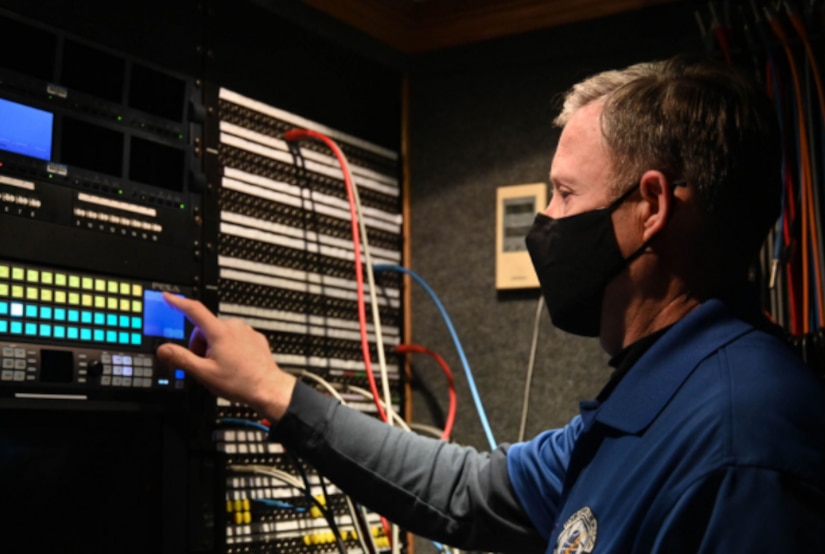
To defend against foreign interference in elections the Election Security Group was created, he said, noting that it consists of a combined team from Cybercom and NSA.
Nakasone also mentioned the importance of partnerships with the Federal Bureau of Investigation, the National Guard Bureau and the Department of Homeland Security's Cybersecurity and Infrastructure Security Agency, which involves sharing information with those who need it as quickly as possible.
Cybercom conducted more than 2,000 operations to get ahead of foreign threats before they interfered or influenced the 2020 elections, Nakasone said.

The general said he wanted to make three important points: "First, Cybercom must be and is able, ready and willing to act. Second, Cybercom's partnership with NSA remains the foundation of our success. And third, we enable our domestic industry, allies and partners by providing critical threat information and insights, which improve their ability to act under their unique authorities."
Cybercom is building on recent guidance from the department, seeking to promote readiness, improve training and attract and retain high-end talent, Nakasone said.
Even with COVID-19 impacts and lengthy security clearance timelines that impact the entire department, Cybercom was able to attract a number of high-end talent to the force, he said.
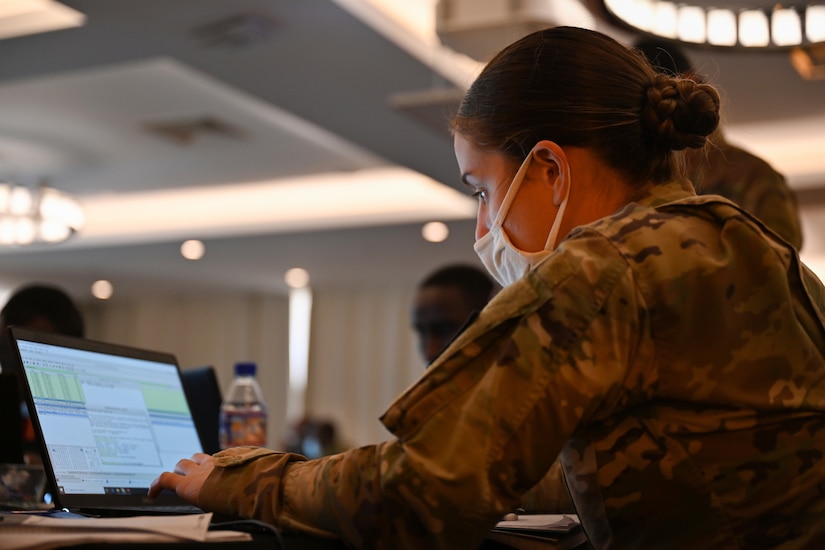
Nakasone mentioned that Cybercom seeks to attract diversity in its force and to root out extremism in the ranks through education, monitoring and good leadership.
"We owe it to ourselves, our workforce and our nation to set and to be the example," he said.
March 25, 2021
The chief of staff of the Army announces the following officer assignments:
Lt. Gen. James E. Rainey, commanding general, U.S. Army Combined Arms Center and Fort Leavenworth, Fort Leavenworth, Kansas, to deputy chief of staff, G-3/5/7, U.S. Army, Washington, D.C.
Maj. Gen. (Promotable) Maria R. Gervais, director, Synthetic Training Environment Cross Functional Team, Orlando, Florida, to deputy commanding general/chief of staff, U.S. Army Training and Doctrine Command, Joint Base Langley-Eustis, Virginia.
Maj. Gen. Richard E. Angle, deputy commander, Joint Special Operations Command, U.S. Special Operations Command, Fort Bragg, North Carolina, to commanding general, 1st Special Forces Command (Airborne), Fort Bragg, North Carolina.
Maj. Gen. Robert L. Edmonson II, deputy chief of staff, G-6, U.S. Army Forces Command, Fort Bragg, North Carolina, to commanding general, U.S. Army Communications-Electronics Command and Aberdeen Proving Ground, Aberdeen Proving Ground, Maryland.
Maj. Gen. James B. Jarrard, commanding general, 25th Infantry Division, Schofield Barracks, Hawaii, to chief of staff, U.S. Indo-Pacific Command, Camp H. M. Smith, Hawaii.
Maj. Gen. Mitchell L. Kilgo, commanding general, U.S. Army Communications-Electronics Command and Aberdeen Proving Ground, Aberdeen Proving Ground, Maryland, to deputy, The Inspector General, U.S. Army, Washington, D.C.
Maj. Gen. Joel K. Tyler, director, J-3 operations/cyber, U.S. Africa Command, Germany, to chief of staff, U.S. Africa Command, Germany.
Brig. Gen. Shan K. Bagby, commanding general, Brooke Army Medical Center; and deputy market manager, San Antonio Military Health System, Joint Base San Antonio, Texas, to commanding general, Regional Health Command-Central, Joint Base San Antonio, Texas.
Brig. Gen. Edward H. Bailey, command surgeon, U.S. Army Forces Command, Fort Bragg, North Carolina, to commanding general, Regional Health Command-Pacific; and market manager, Puget Sound Enhanced Multi-Service Market, Joint Base Lewis-McChord, Washington.
Brig. Gen. William M. Boruff, deputy commander, Combined Security Command-Afghanistan, U.S. Forces-Afghanistan, Operation Freedom's Sentinel, Afghanistan, to program executive officer, U.S. Army Joint Program Executive Office, Armaments and Ammunition; and commanding general, Picatinny Arsenal, Picatinny Arsenal, New Jersey.
Brig. Gen. Winston P. Brooks, commandant, U.S. Army Field Artillery School, U.S. Army Fires Center of Excellence, Fort Sill, Oklahoma, to deputy chief of staff for operations, Allied Rapid Reaction Corps, NATO, United Kingdom.
Brig. Gen. Timothy D. Brown, director, J-2, U.S. Southern Command, Doral, Florida, to director, J-2, U.S. European Command, Germany.
Brig. Gen. Curtis A. Buzzard, commandant of cadets, U.S. Military Academy, West Point, New York, to deputy chief of staff, operations, Resolute Support Mission, NATO; deputy commanding general (operations), U.S. Forces-Afghanistan; and commander, U.S. National Support Element Command-Afghanistan, Operation Freedom's Sentinel, Afghanistan.
Brig. Gen. Jack M. Davis, commanding general, Regional Health Command-Pacific; and market manager, Puget Sound Enhanced Multi-Service Market, Joint Base Lewis-McChord, Washington, to deputy chief of staff, quality and safety, U.S. Army Medical Command, Washington, D.C.
Brig. Gen. Johnny K. Davis, chief of staff, U.S. Army Futures Command, Austin, Texas, to commanding general, U.S. Army Cadet Command and Fort Knox, Fort Knox, Kentucky.
Brig. Gen. Christopher L. Eubank, commanding general, 7th Signal Command; and deputy commanding general, U.S. Army Network Enterprise Technology Command, Fort Gordon Georgia, to commanding general, U.S. Army Network Enterprise Technology Command, Fort Huachuca, Arizona.
Brig. Gen. Wendy L. Harter, commanding general, Regional Health Command-Central, Joint Base San Antonio, Texas, to deputy chief of staff, G-3/5/7, U.S. Army Medical Command, Falls Church, Virginia.
Brig. Gen. John D. Kline, deputy chief of staff, G-3/5/7, U.S. Army Training and Doctrine Command, Joint Base Langley-Eustis, Virginia, to senior advisor to the Ministry of Defense, U.S. Forces-Afghanistan, Operation Freedom's Sentinel, Afghanistan.
Brig. Gen. Mary V. Krueger, deputy chief of staff, G-1/4/6, U.S. Army Medical Command, Falls Church, Virginia, to commanding general, Regional Health Command-Atlantic, Fort Belvoir, Virginia.
Brig. Gen. Michael B. Lalor, commanding general, Army Medical Logistics Command, U.S. Army Materiel Command, Fort Detrick, Maryland, to commandant, U.S. Army Ordnance School, U.S. Army Sustainment Center of Excellence, Fort Lee, Virginia.
Brig. Gen. Michelle M. Letcher, commandant, U.S. Army Ordnance School, U.S. Army Sustainment Center of Excellence, Fort Lee, Virginia, to chief of staff, U.S. Army Futures Command, Austin, Texas.
Brig. Gen. Paula C. Lodi, commanding general, Regional Health Command-Atlantic, Fort Belvoir, Virginia, to deputy commanding general (Support), U.S. Army Medical Command, Joint Base San Antonio, Texas.
Brig. Gen. Joseph A. Ryan, deputy chief of staff, operations, Resolute Support Mission, NATO; deputy commanding general (operations), U.S. Forces-Afghanistan; and commander, U.S. National Support Element Command-Afghanistan, Operation Freedom's Sentinel, Afghanistan, to commanding general, 25th Infantry Division, Schofield Barracks, Hawaii.
Brig. Gen. Michael J. Talley, commanding general, U.S. Army Medical Research and Development Command and Fort Detrick, Fort Detrick, Maryland, to deputy commanding general (operations), U.S. Army Medical Command, Falls Church, Virginia.
Maj. Gen. Gregory J. Mosser, commander (Troop Program Unit), 377th Theater Sustainment Command, Belle Chasse, Louisiana, to deputy commanding general (Individual Mobilization Augmentee), U.S. Army Reserve Command, Fort Bragg, North Carolina.
Brig. Gen. John W. Aarsen, commander (Troop Program Unit), 451st Sustainment Command (Expeditionary), Wichita, Kansas, to deputy commanding general (Troop Program Unit), 79th Theater Sustainment Command, Los Alamitos, California.
Brig. Gen. Christopher Z. Barra, deputy commanding general – Support (Troop Program Unit), 63d Readiness Division, Mountain View, California, to commander (Troop Program Unit), 451st Sustainment Command (Expeditionary), Wichita, Kansas.
Brig. Gen. Mark E. Black, commander (Troop Program Unit), 350th Civil Affairs Command, Pensacola, Florida, to director of operations, (Individual Mobilization Augmentee), J-3 (Wartime), U.S. Forces Korea, Republic of Korea.
Brig. Gen. Aida T. Borras, commanding general (Troop Program Unit), Military Intelligence Readiness Command, Fort Belvoir, Virginia, to deputy commanding general, Southern European Task Force – Africa, Vicenza, Italy.
Brig. Gen. Timothy D. Connelly, commander (Troop Program Unit), 9th Mission Support Command, Honolulu, Hawaii, to deputy chief of staff, G-3/5/7 (Individual Mobilization Augmentee), Office of the Chief of Army Reserve, Fort Belvoir, Virginia.
Brig. Gen. Joseph D’costa, Reserve vice director (Individual Mobilization Augmentee), J-7, Joint Staff, Washington, D.C., to deputy commander - Support (Troop Program Unit), 412th Engineer Command, Vicksburg, Mississippi.
Brig. Gen. William B. Dyer III, assistant judge advocate general - operations (Individual Mobilization Augmentee), Office of the Judge Advocate General, U.S. Army, Washington, D.C., to commanding general (Troop Program Unit), U.S. Army Reserve Legal Command, Gaithersburg, Maryland.
Brig. Gen. Jeffrey M. Farris, commander (Troop Program Unit), 352d Civil Affairs Command, Fort Meade, Maryland, to deputy commander (Troop Program Unit), 108th Training Command (Initial Entry Training), Charlotte, North Carolina.
Brig. Gen. Stephanie Q. Howard, deputy commander (Troop Program Unit), 108th Training Command (Initial Entry Training), Charlotte, North Carolina, to commander (Troop Program Unit), U.S. Army Reserve Sustainment Command, Birmingham, Alabama.
Brig. Gen. Robert T. Krumm, Reserve deputy commander (Troop Program Unit), U.S. Army Corps of Engineers North Atlantic Division, Fort Hamilton, New York, to deputy commanding general - operations (Troop Program Unit), 81st Readiness Division, Fort Jackson, South Carolina.
Brig. Gen. Susie S. Kuilan, deputy commanding general - operations (Troop Program Unit), 200th Military Police Command, Fort Meade, Maryland, to commander, (Troop Program Unit), 95th Training Division (Initial Entry Training), Fort Sill, Oklahoma.
Brig. Gen. Jonathan C. Moyer, deputy commanding general (Troop Program Unit), 335th Signal Command (Theater), East Point, Georgia, to commanding general (Troop Program Unit), 335th Signal Command (Theater) Operational Command Post (Forward), Operation Spartan Shield, Kuwait.
Brig. Gen. Robert S. Powell, Jr., director J6/8/9 (Individual Mobilization Augmentee), Cyber National Mission Force, U.S. Army Element U.S. Cyber Command, Fort Meade, Maryland, to deputy commanding general (Troop Program Unit), 335th Signal Command (Theater), East Point, Georgia.
Brig. Gen. Jeffrey D. Pugh, commander (Troop Program Unit), Mission Command Support Group, 88th Readiness Division, Fort Snelling, Minnesota, to commander (Troop Program Unit), 350th Civil Affairs Command, Pensacola, Florida.
Brig. Gen. David M. Samuelsen, deputy commanding general (Troop Program Unit), 80th Training Command (The Army School System), Richmond, Virginia, to deputy commanding general - operations (Troop Program Unit), 200th Military Police Command, Fort Meade, Maryland.
Brig. Gen. Charles S. Sentell III, commander (Troop Program Unit), 95th Training Division (Initial Entry Training), Fort Sill, Oklahoma, to deputy commanding general - support (Troop Program Unit), 377th Theater Sustainment Command, Belle Chase, Louisiana.
Brig. Gen. Katherine A. Simonson, commander (Troop Program Unit), 2d Medical Training Brigade, Salt Lake City, Utah, to director, research and development (Individual Mobilization Augmentee) Defense Health Agency J-9, Falls Church, Virginia.
March 25, 2021 | BY David Vergun , DOD News
Although U.S. Special Operations Command makes up just 3% of the joint force, it has suffered over half of all combat casualties over the past few years, said a Defense Department official.
Christopher P. Maier, acting assistant secretary of defense for special operations and low-intensity conflict, testified today at a Senate Armed Services Committee hearing on the defense authorization request for fiscal year 2022 and the future years defense program.
The special operations forces, or SOF, community's priorities, he said, are to defend the nation, take care of its people and succeed through teamwork.
"We continue to adapt the unique capabilities and problem solving expertise of our special operators to the challenge of great power competition with Russia and China, while strengthening the alliances and partnerships that enhance our ability to compete," Maier said, adding that protecting Americans from terrorist organizations is also a top priority.
Despite the COVID-19 pandemic, SOF continue to maintain a high level of operational readiness, he said. "We remain focused on and are making progress in easing the strain of high rates of overseas deployments."
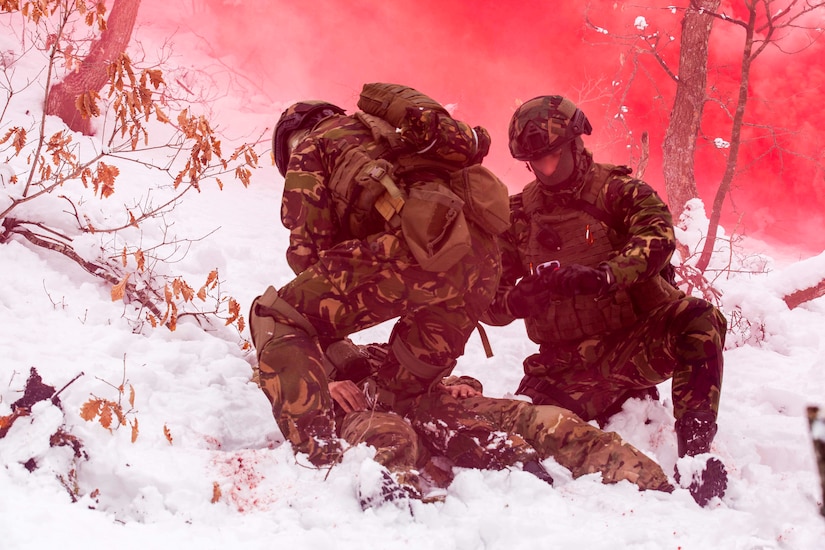
Maier said he is concerned about incidents of serious moral and ethical failings within the SOF community. He added that last year, Socom had conducted a comprehensive review of SOF culture and ethics.
The SOF community is also committed to enhancing diversity, he said. "As we compete against different and more capable adversaries, a more diverse force empowers us to draw upon broader perspectives, different lived experiences and new ideas."
Army Gen. Richard D. Clarke, the commander of Socom, also testified. He noted that SOF continues to deter and disrupt persistent threats by terrorist and extremist organizations worldwide.
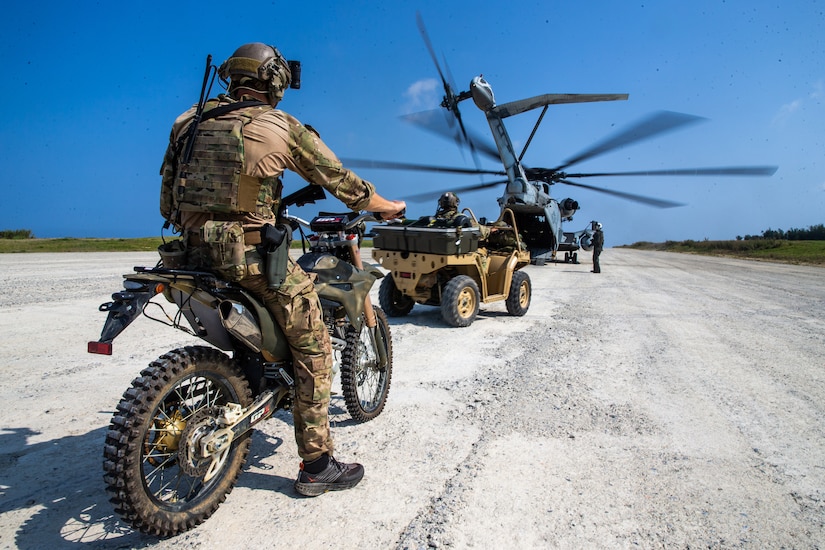
Below the level of armed conflict SOF teams support a wide range of U.S. policy objectives, and generate options to counter China, Russia and other competitors, Clarke said.
As SOF forge partnerships and build partner capacity, it gains access, placement and influence to counter terrorist extremist organizations, he added.
"Today, as we sit here, nearly 5,000 special operators stand vigilant in almost 60 countries. Their commitment to American security and prosperity is inspirational and their enthusiasm to learn, adapt and serve is infectious. It is my honor to lead them," Clarke said.
Navy Seaman Megan Kearns climbs on the forward course yard during training aboard the U.S. Coast Guard cutter Eagle in the Atlantic Ocean, March 9, 2021.
Service members with the Defense POW/MIA Accounting Agency build dirt screening stations during a recovery mission in the Ratanakiri Province, Cambodia, Feb. 8, 2021. DPAA’s mission is to achieve the fullest possible accounting for missing U.S. military personnel in countries around the world.
The USS Ashland fires a rolling airframe missile during a live-fire exercise in the Philippine Sea, March 20, 2021.
A Navy air-cushioned landing craft approaches the well deck of the USS Essex during routine operations in the Pacific Ocean, March 20, 2021.
March 25, 2021 | BY David Vergun , DOD News
Officials with the Defense Department and others testified yesterday about efforts to mitigate and clean up PFAS, a group of chemicals that can be harmful to human health.
PFOS, which is perfluorooctane sulfonate, and PFOA, or perfluorooctanoic acid, are two chemicals in the larger PFAS class. The chemicals are used in a firefighting foam that is known as aqueous film-forming foam.
The foam is used by DOD and civilian firefighting organizations and other industries to rapidly extinguish fuel fires and protect against catastrophic loss of life and property. The foam is also present in other items, such as furniture and carpet.

Paul D. Cramer, principal deputy assistant secretary of defense for sustainment (Installations), provided testimony at a virtual hearing of the House Appropriations Subcommittee on Military Construction, Veterans Affairs, and Related Agencies.
DOD has a long track record of responsibly addressing issues by following the science and the direction of Congress, he said. This record includes many accomplishments and strong interagency collaboration, such as with the Environmental Protection Agency.
"This does not mean that there's not room for improvement, specifically in the areas of increased transparency regarding the progress of our work," he said.
Cramer thanked Congress for providing the resources needed to protect the health and safety of service members, their families, and the communities surrounding military installations.
"We recognize that our accomplishments today are not sufficient alone to meet the challenges that we are, that we face, and accordingly, we are continuing our efforts of the DOD PFAS Task Force," he said.
The task force was established in July, 2019, to provide strategic leadership and direction to ensure a coordinated, aggressive and holistic approach on DOD-wide efforts to address PFAS.
"The task force continues to diligently address PFAS and is postured to be responsive to the direction of this administration," Cramer said.
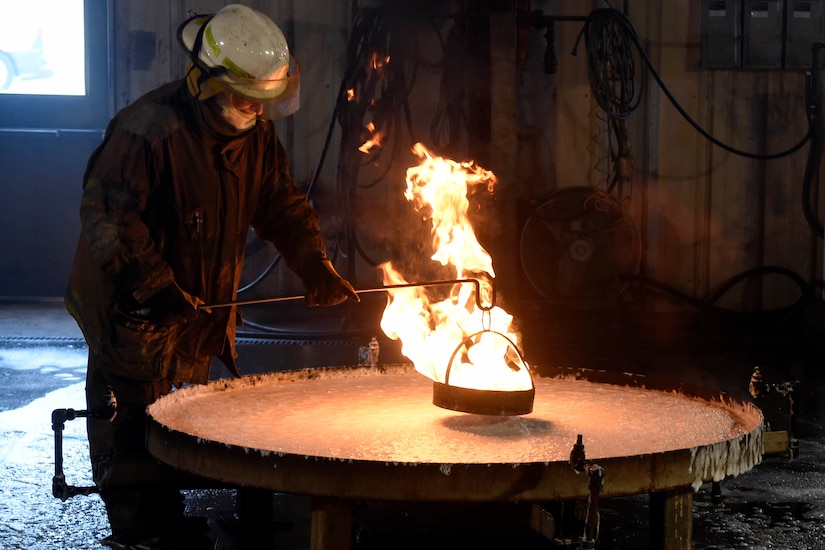
Task force efforts are organized along three major lines of effort, he said: mitigate and eliminate the use of AFFF; clean up PFAS; and understand the impacts of PFAS on human health.
"The department is committed to addressing its PFAS releases to the environment, abiding by federal cleanup law," he said.
As of Sept. 30, 2020, DOD has identified 108 installations that may have used or potentially released PFAS, and the department is conducting a PFAS assessment at these installations, he noted.
DOD's priority is to quickly address PFOS and PFOA in drinking water above the EPA lifetime health advisory levels of 70 parts per trillion, he said.
No one is currently drinking water on or off base with PFAS — including PFOS or PFOA — above those levels where DOD is the known source, he said.
DOD is also investing in research to develop technologies to quantify and clean up PFAS, Cramer said.
These efforts reinforce DOD's commitment to protect human health, he said. "Addressing the challenges of PFAS is a national issue that will require national solutions and interagency efforts."
A missile is launched from the guided missile destroyer USS John S. McCain during an exercise in the Philippine Sea, March 20, 20
Marines and members of the Coast Guard conduct medical evacuation hoisting drills in San Diego, March 19, 2021. The exercises were held to familiarize Marines with medevac protocols while aboard a small vessel.
March 25, 2021 | BY Terri Moon Cronk , DOD News
"We're not entering a new Cold War," said Michael Brown in a virtual, keynote address to NDIA's National Security Artificial Intelligence Conference and Exhibition.
What he thinks is different from the former Cold War starts with China's economic scale. China clearly has the potential to overtake the U.S. in terms of economic scale because its population is four times as large, Brown said.
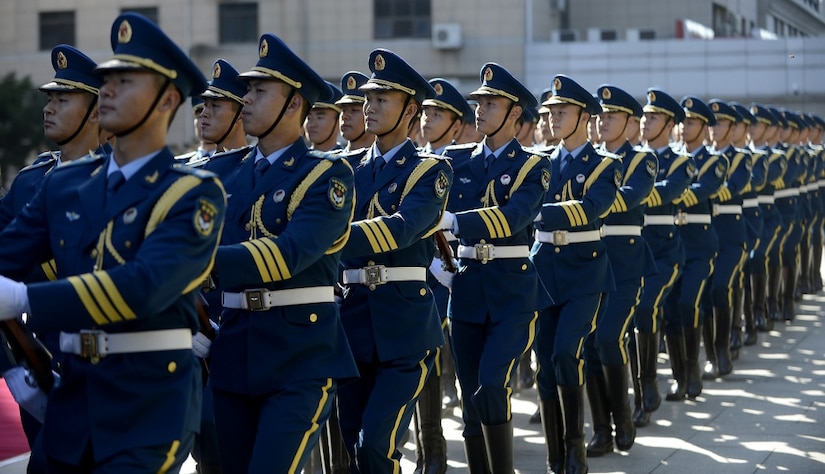
The other key difference is China is well-integrated into the global economic system, he said.
"That's part of the reason they've risen so dramatically economically, and they're using global institutions. They want to be well-integrated and, in fact, setting [up] how those institutions operate. China [also] wants to have very successful integration of commercial technology into their military," he said.
China has quite an impressive set of technologies where they're already leading, Brown said.
"If you look at where they're challenging us [in] AI [artificial intelligence], they are a lot closer than we would like, and we need to continue to invest to make sure that we maintain a lead. I would say AI is just one of the areas where we need to continue to invest to make sure that we — with our allies — have a lead," he said.
The DIU director emphasized that China has more genetic data on U.S. citizens than the United States. They've also made it a point to figure out what they can do with mining that data and combining that with other information they've stolen — like health records, or our security clearance information — which has dramatic implications, both offensively and defensively, he added.

Brown said one of the things the U.S. needs to do in response is think about long-term investments in technologies "[and] not to pick winners and losers to make sure we're setting the table so we have a very robust set of commercial suppliers who can be challenging these Chinese global champions," he explained.
If the U.S. is thinking out beyond the next 20, 30 or 40 years as China is, such an investment will have untold spillover effects, Brown said. This is where the internet, global positioning systems, miniaturized electronics and other key innovations have come from that lead to tremendous economic prosperity, which, in turn, guarantees U.S. national security, he added.
Brown said he thinks of the technological race with China as a superpower marathon, and there are four steps the U.S. should take that will put it on the best footing for this race: